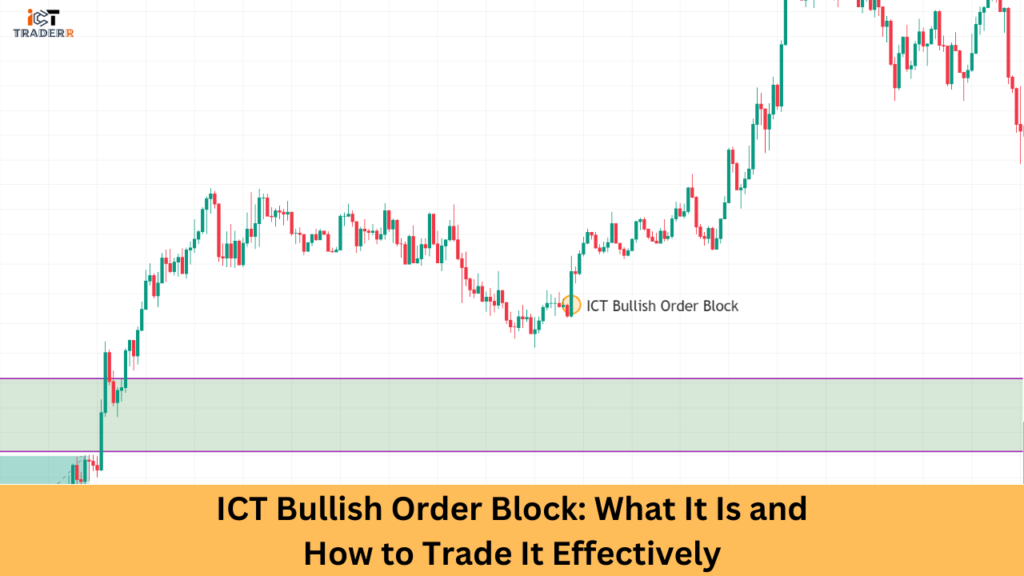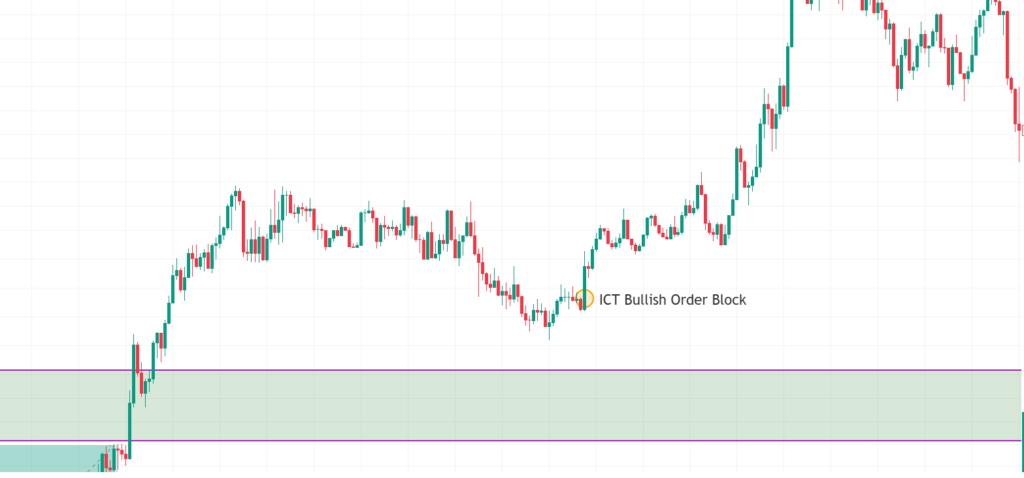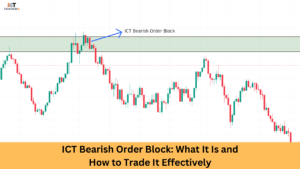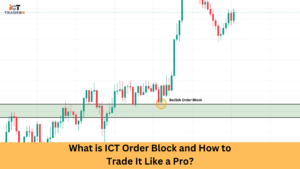In the foreign exchange and trading world, understanding the structures of the markets and the movements of prices is important in decision-making. One of the major concepts developed by the Inner Circle Trader methodology is a bullish order block. This trading strategy applies commonly among experienced traders to spot potential reversal areas and high-probability trading setups.
In this article we will discuss the ICT bullish order block, how it works, and the best approaches to trading it effectively.

What Is an ICT Bullish Order Block?
A bullish order block is the last bearish candle before a sharp bullish impulse move. It represents a zone where institutional buyers step in, creating a strong support area. Typically, this block consists of two candles: a bearish candle followed by a bullish candle. The bearish candle marks the end of the downtrend, while the bullish candle signals the beginning of a new upward trend.
It refers to the last bearish candle before a significant bullish move, implying that institutional investors have absorbed the selling pressure and are now ready to push prices higher. Traders will employ this setup to forecast a move in price and secure a position with great accuracy.

How to Identify a Bullish Order Block
To identify a bullish order block, it is essential to understand price action and market structure. Here are some of the keys to identifying a bullish order block:
Strong Downward Price Action: Most often, the price of the market falls sharply before forming a bullish order block.
Locate the Last Bearish Candle Before the Price Reverses: The last bearish candle before the impulsive bullish move is termed the order block.
Check For Institutional Activity: High trading volumes or liquidity sweeps around the order block zone confirm institutional activity.
Higher Time Frames Have Longer Term Order Blocks: Because an order block tends to be higher with time frames such as H1, H4, or daily compared to the lower time frames, the order blockers will also be the best placed on those time intervals.
Proper Reaction of Price: If the price re-enters the zone and shows evidence of rejection (like bullish engulfing, pin bar, or other reversal patterns), order block confirmation takes place.
How to Trade a Bullish Order Block Effectively
Once a bullish order block is identified, traders can use various strategies to enter profitable trades. Follow these steps for effective trading:
Instead of entering a trade immediately, wait for the price to return to the order block zone.
Watch for bullish candlestick patterns (engulfing, pin bars, or hammer) when the price reaches the order block.
Place the stop-loss below the order block to minimize risk in case the trade goes against you.
Set take-profit levels at significant resistance zones or Fibonacci extension levels.
With the Use of Confluence Factors, you can combine order blocks with other technical indicators such as moving averages, RSI, or trendlines to increase accuracy.
Once all the confirmations are in, a long trade can be initiated at the order block zone. Put your stop-loss a little bit below the order block low to reduce the risk. The possible take-profit targets can be the next resistance level or a risk-to-reward ratio of 1:2 or 1:3.
We need to consider volume and market sentiment as the trade progresses. If the price is stalling around key resistance levels, then consider taking partial profits or moving up your stop-loss to lock some gains.
Common Mistakes to Avoid
Even experienced traders can make mistakes when trading order blocks. Here are common errors and how to avoid them:
- A bullish order block works best in high-liquidity markets. Avoid trading during low-volume periods or when major news events can impact prices unpredictably.
- Overleveraging or risking too much capital on a single trade can be disastrous. Stick to a solid risk management plan.
- Never enter a trade blindly. Always wait for confirmation signals before executing a trade.
- Placing stop-loss orders too close to the entry point increases the chances of getting stopped due to market noise.
- Higher timeframes provide stronger order blocks and better trade setups. Always analyze daily or 4-hour charts before executing a trade on lower timeframes.
Conclusion
The ICT Bullish Order Block is a powerful concept and a trading tool for those wishing to coincide with the movement of the institutions. The identification and effective trading of bullish order blocks are one of the main ways for traders to increase their accuracy and probability of success. Patience and confirmation are needed to avoid several common pitfalls. The order block can be a valuable tool for any trader with proper risk management and strategies.
FAQs
Can we trade bullish order blocks in all market conditions?
No, they mostly work in trending market conditions. In a highly volatile and ranging market, avoid using them without confirmation.
What time frames are best to identify bullish order blocks?
Higher time frames such as the H1, H4, and daily charts give more reliable order blocks than lower time frames.
Do I need any indicators to trade order blocks?
No, but employing confluence through the use of indicators such as moving averages and RSI would help improve the accuracy of the predictions.
What ratio of risk to reward is optimal for trading in order blocks?
It should be noted that a risk-reward ratio of 1:2 or greater is generally perfect for trading purposes.



